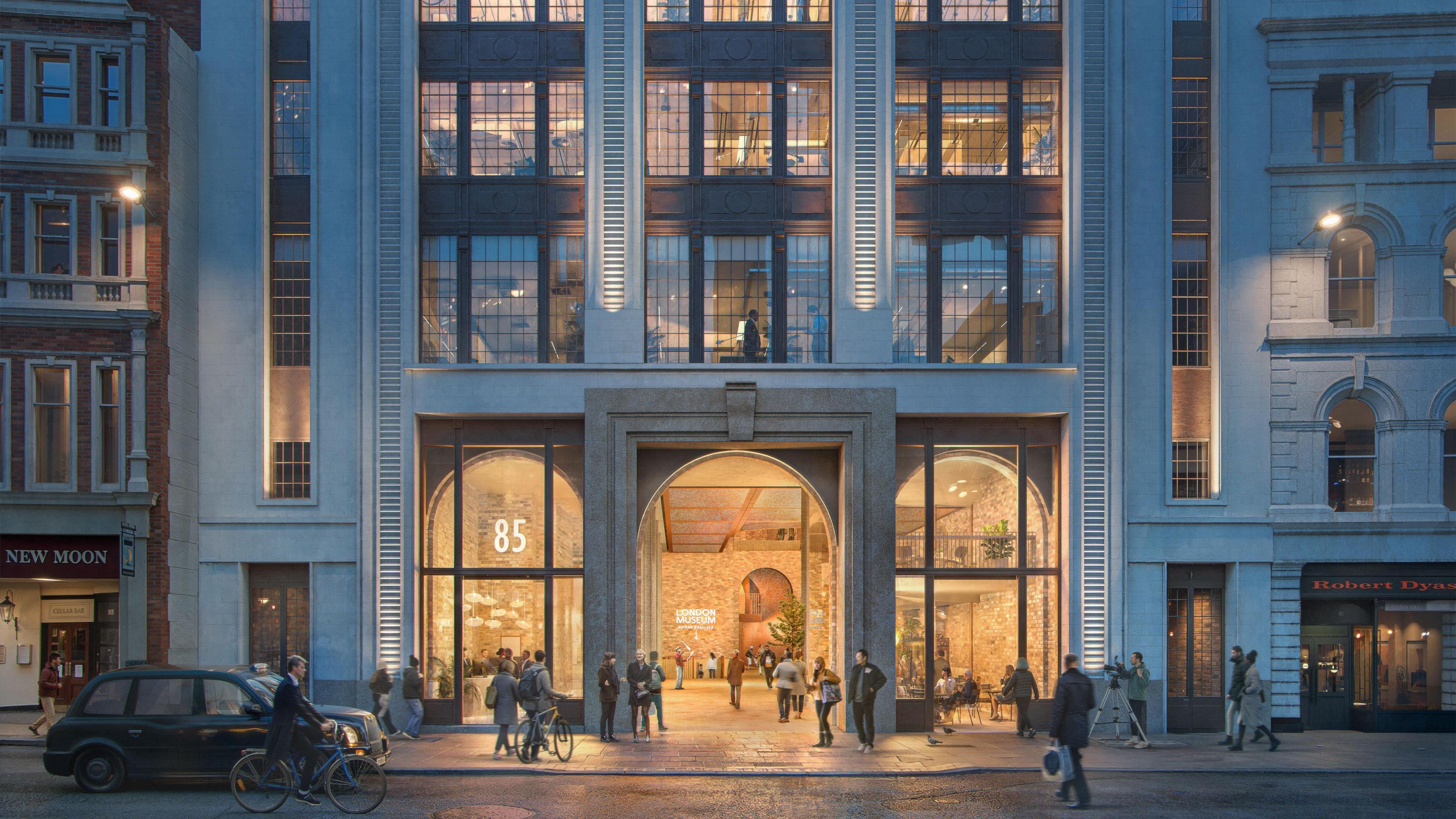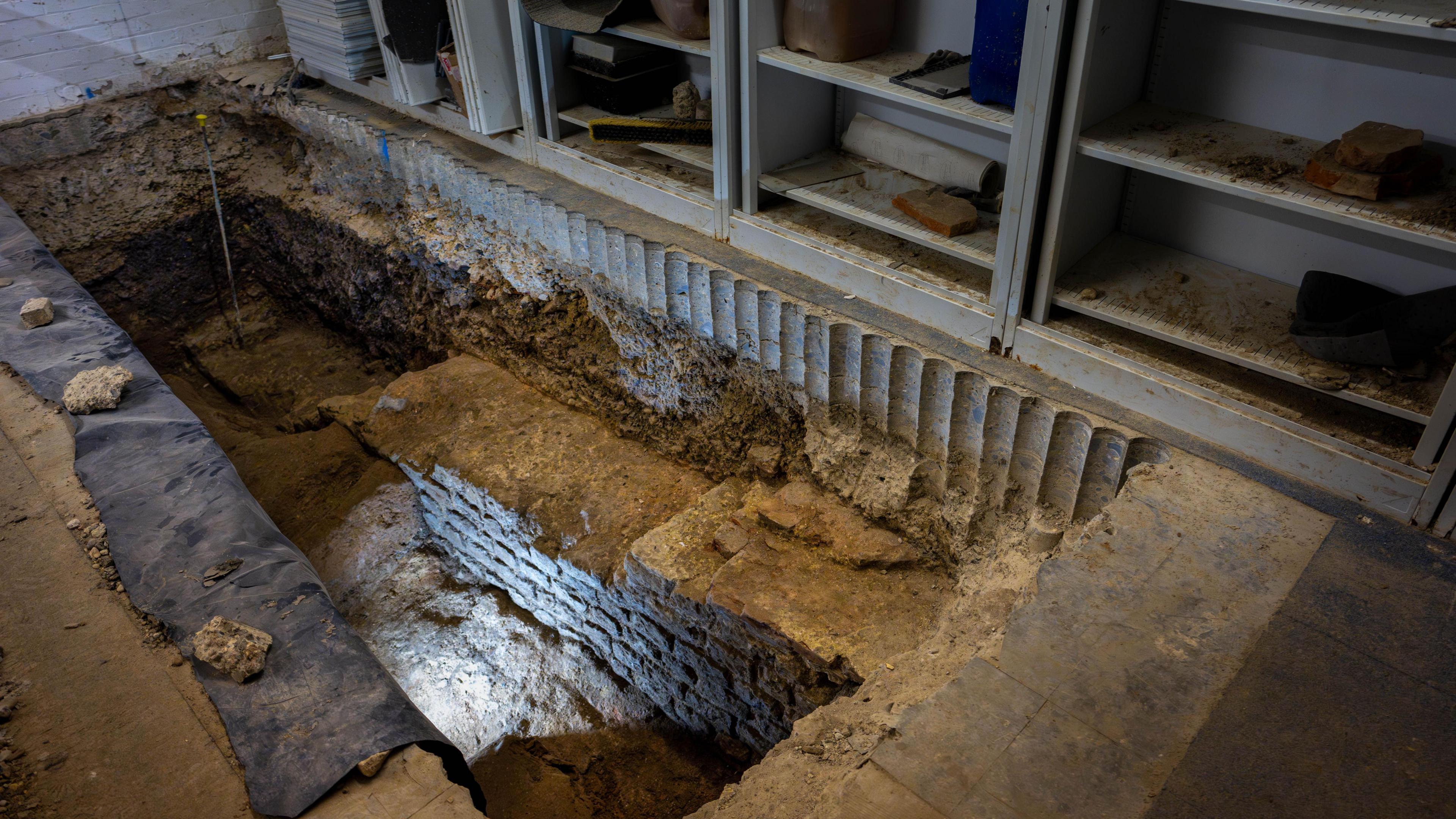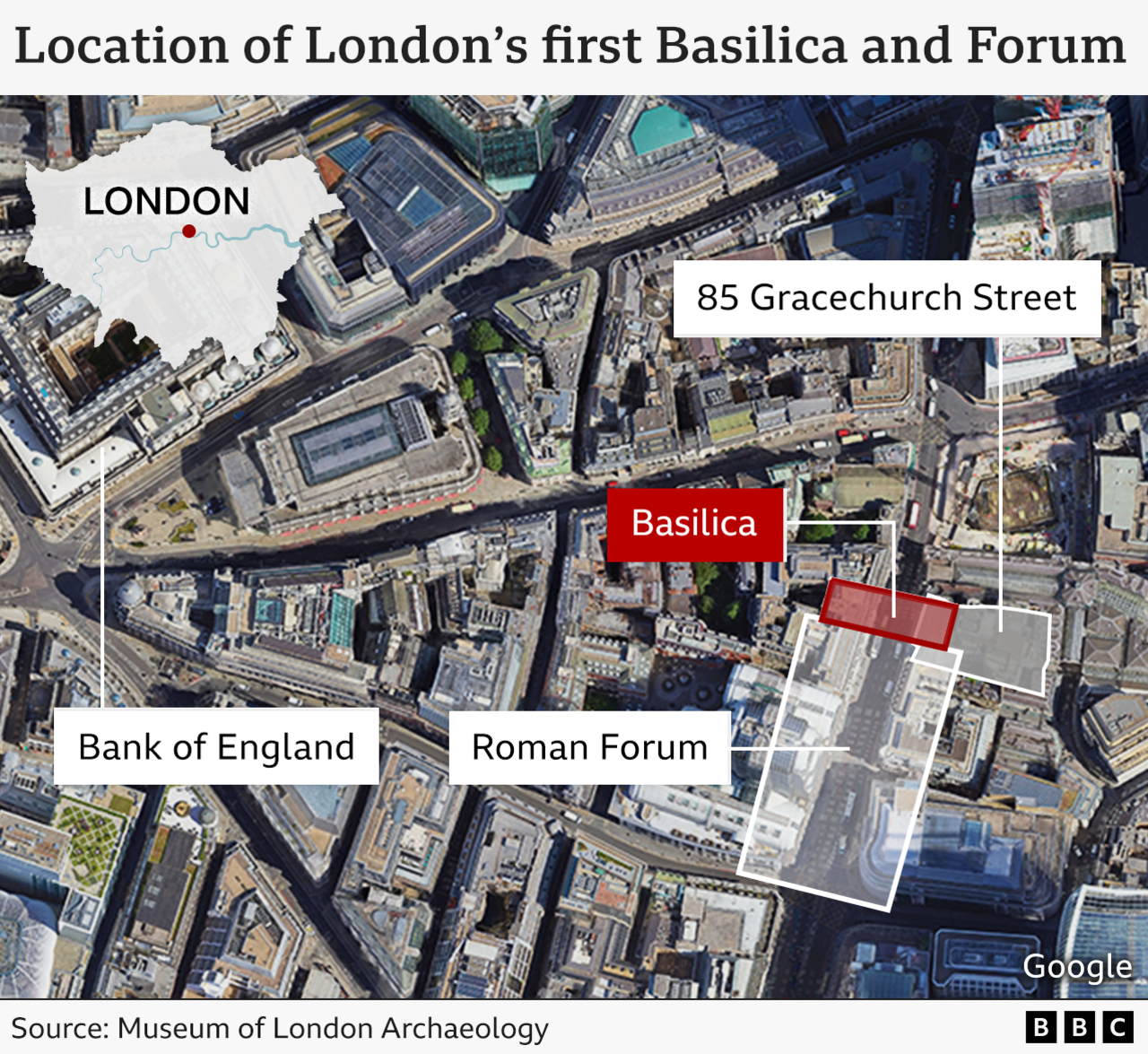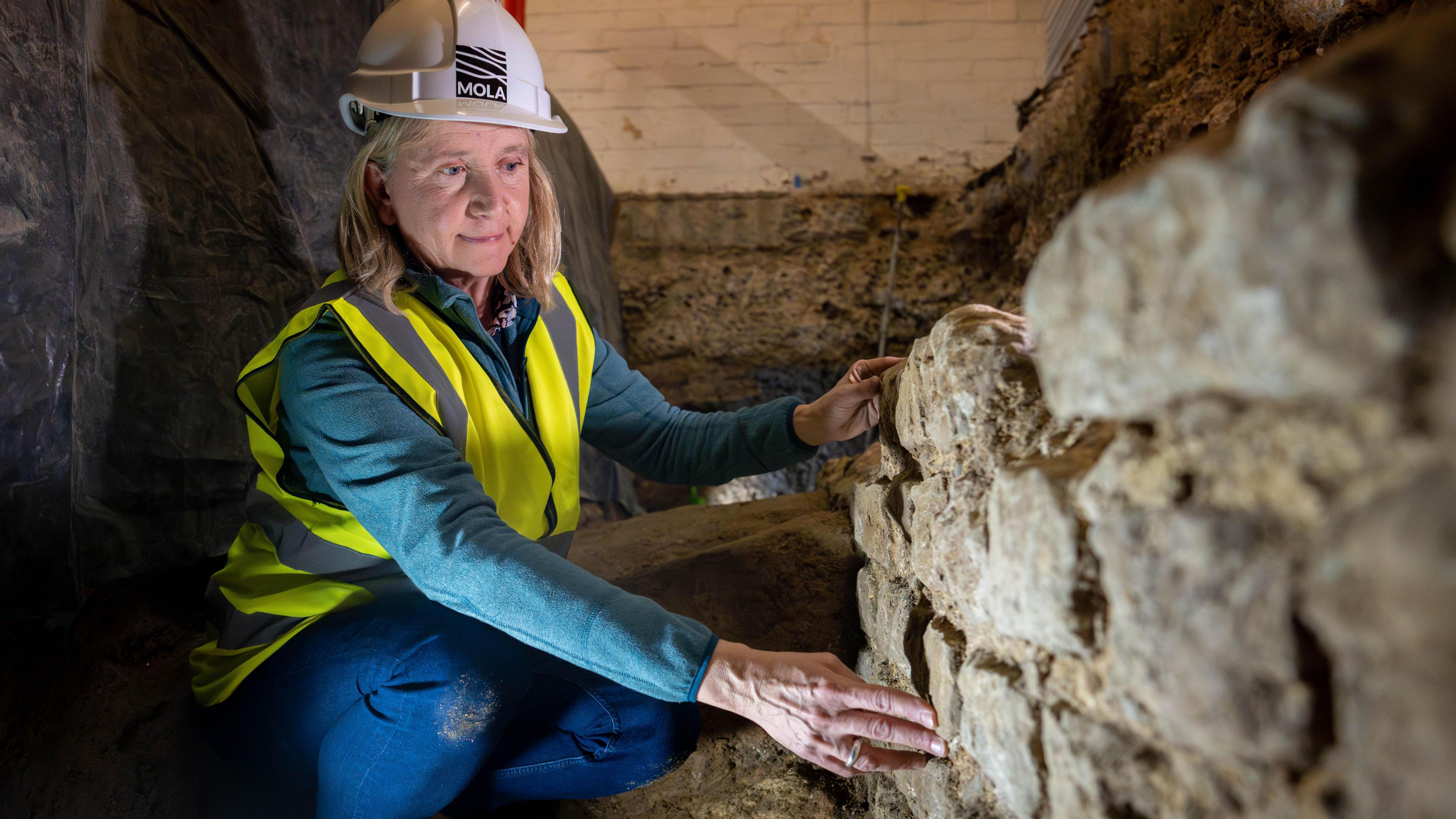Office plans amended after Roman basilica found

- Published
Revised plans for an office block in the City of London have been approved, after a Roman basilica was found beneath the site.
A rethink of the 85 Gracechurch Street scheme was forced upon premises owner Hertshten Properties earlier this year following the discovery.
Initially planned as a 32-storey building, the block was reduced to 30 storeys and a public exhibition showcasing the near 2,000-year-old basilica will be created.
The remains, which are believed to date to the late 70s or 80s AD, were discovered during investigations by Museum of London Archaeology (MOLA).

Archaeologists found the Roman masonry under the concrete floor of the office
The location of the ancient basilica was known by experts, though the extent of its preservation was a surprise, according to the Local Democracy Reporting Service.
Sophie Jackson, director of development at MOLA, said the proposal would add a "compelling, world-class display of the remains of the first basilica, right in the centre of the City".
She said: "Finding substantial remains of the basilica is one of the most remarkable discoveries made in the City in recent years, and it has been described as the equivalent to discovering the Speaker's Chair in the Chamber of the House of Commons in 2,000 years' time."

Fresh plans were submitted with the City of London Corporation in April, which also featured a public walkway providing views of the nearby Leadenhall Market.
It will deliver an increase of about 27,000 square metres of office floorspace compared to the existing building, which will be demolished.
Ron Hertshten, chief executive of Hertshten Properties (UK) Limited, said the development embraced the City of London's history.
The revised plans were approved on 8 July.
Listen to the best of BBC Radio London on Sounds and follow BBC London on Facebook, external, X, external and Instagram, external. Send your story ideas to hello.bbclondon@bbc.co.uk, external
